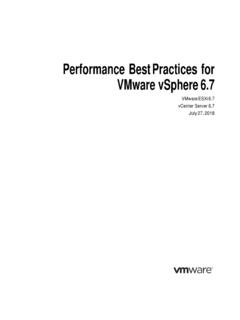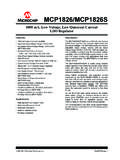Transcription of Fault Tree Analysis - Robert Bosch GmbH
1 Fault Tree Analysis Robert Bosch GmbH | Status -1 - Table of Contents Register of figures .. 3 1. Preface .. 4 2. Introduction .. 5 Objectives of the FTA .. 5 History of the FTA .. 5 Benefits and drawbacks of the FTA .. 5 Benefits of the method .. 5 Drawbacks of the method .. 6 FTA application areas .. 6 3. Fundamentals of the FTA .. 7 Roles .. 7 The 8 steps of the FTA an overview .. 8 FTA software at Bosch .. 8 4. The Bosch approach to prepare a FTA .. 9 Step 0: Preparation including system Analysis .. 9 General .. 9 Preventive / corrective FTA .. 10 Step 1: Definition of the undesirable event (Top Event) .. 10 Step 2: Establish the criteria for the objective of the Analysis .. 10 General .. 10 Preventive / corrective .. 11 Step 3: Construct the Fault tree (qualitative description) .. 11 General .. 11 Symbols and modeling recommendations .. 11 Breakdown principles.
2 12 Step 4: Qualitative interpretation .. 17 General .. 17 Fault combinations .. 18 Step 5: Determine the probability of occurrence of basic events (quantitative description) 29 General .. 29 Preventive / corrective .. 30 Step 6: Quantitative interpretation .. 30 General .. 30 Definition of the computing parameters in the FTA tool .. 30 Numerical value of the Top Gates .. 31 Fault Tree Analysis Robert Bosch GmbH | Status -2 - Identify optimization potential .. 32 Step 7: Establish the need for action and success monitoring .. 36 Step 8: Release and documentation of the FTA .. 37 5. Literature on FTA .. 39 Norms .. 39 Standards .. 39 Handbooks .. 39 Reference books .. 40 6. Glossary .. 41 7. Attachment 1 Symbols and modeling recommendations .. 44 Handling variants .. 44 Modeling application boundary conditions: .. 45 Special hints on Fault tree construction for evidence per ISO 46 Modeling monitoring (monitors).
3 47 Overview of the event and gate types in the Tool FaultTree+ .. 49 Gate types available .. 49 Available event type / event symbols .. 55 Available Fault models .. 56 ISO 26262: Relationship of failure tolerance time Fault model consideration time (mission time) for continuous or initial monitoring .. 58 Recommendations on the naming convention .. 60 Naming Events / Gates .. 60 Use event groups .. 62 Special feature when naming gates .. 62 Hints and tricks in the preparation, computation and handling of Fault trees .. 64 Multiple definition of a single basic event .. 64 Application of NOT or XOR gates for activated function Full Not Logic .. 65 Unintentional / intentional absorption of multiple point faults .. 68 Use of cut-off rules for the computation .. 69 Taking inputs into consideration that have no influence on a gate .. 72 Open points in the FTA (=> Transfer Gates, Labels etc.)
4 73 Modeling Common-Cause Failures .. 73 Modeling with the -factor model .. 73 Modeling by using the Root-Cause event .. 73 8. Attachment 2 example of a report .. 74 Fault Tree Analysis Robert Bosch GmbH | Status -3 - Register of figures Figure : Sensor substitute model for the sensor XXX .. 13 Figure : Fault types .. 15 Figure : Generate FTA / FMEDA interfaces .. 16 Figure : FTA / FMEDA interfaces - example .. 17 Figure : Example of a Fault tree .. 18 Figure : Retain results activated exclusively for the Top Gate .. 19 Figure : Cut-Set list in FaultTree+ for the Top Event .. 20 Figure : Importance list in FaultTree+ .. 21 Figure : Monitored faults in FaultTree+ in the Cut-Set list .. 22 Figure : Unambiguous classification using BI: dotted - single point faults with a rare operating condition interrupted line monitored faults .. 22 Figure : Step 1) determining potentially latent / non-latent paths.
5 24 Figure : Step 2) inheriting the initial partitioning on the directly associate FT elements (OR gates or events) .. 25 Figure : Step 3ff) Analysis of the lower-level AND gates .. 26 Figure : Fault tree 34 Figure : Handling variants for a supplementary branch .. 44 Figure : Handling variants of mutually excluding options .. 45 Figure : Modeling application boundary conditions .. 46 Figure : Modeling a monitoring system implemented in hardware .. 47 Figure : Modeling a monitoring system implemented in software .. 48 Figure : Naming convention in the event table .. 61 Figure : Event groups .. 62 Figure : Naming convention gate table .. 63 Figure : Absorption of wheel-speed faults .. 69 Figure : Project options Cut-Offs .. 70 Figure : Example Fault tree for demonstrating Cut-Offs .. 71 Fault Tree Analysis Robert Bosch GmbH | Status -4 - 1. Preface This document describes the Fault Tree Analysis method as can be applied in all company divisions.
6 As a deductive method it is one way to meet the requirements of ISO 26262 on functional safety in the automobile industry and it is considered as a recognized standard. The FTA can be used in a preventive or in a corrective manner. Systematic consideration of potential failures and the documentation of these with the means of the FTA help to describe failure mecha-nisms and derive relevant actions as well as documenting their effects. This contributes to the devel-opment of robust products and processes and in this way safeguards the company s successes as well. The effectiveness of FTA depends on it being carried is good time, on the participation of skilled asso-ciates and on concentrating on the aspects that are relevant. The FTA documentation and contents of this constitute together with other documents - like for ex-ample FMEA, drawings, manufacturing and test instructions sensitive know-how and may only be forwarded under defined boundary conditions.
7 As a method of qualitative and quantitative risk Analysis the FTA is included in engineering processes and manufacturing processes. Fault Tree Analysis Robert Bosch GmbH | Status -5 - 2. Introduction Objectives of the FTA The FTA serves in the first instance to detect and eliminate weaknesses as well as to make comparative studies. With the help of this method the probability for the occurrence of a previously defined event (Top Event) as well as the corresponding causes shall be determined. The FTA approach here is deductive from the effect to the cause (Top-Down approach). The data acquired by the FTA makes possible, amongst others: Identification of causes and combinations of causes that lead to an undesirable event (Top Event). Computation of the probability of occurrence of the undesirable event or of the system avail-ability (Boolean algebra). Identification of particularly cCritical events and combinations of events ( Fault paths).
8 Identification of particularly effective improvement possibilities. Showing and documentation of the failure mechanisms and the functional relationships. Determining the characteristic values for demonstrating safety per ISO 26262. History of the FTA The first safety / risk analyses (USA 1950) were limited to investigating the different types of failures (Failure Modes) of components / assemblies of a system and the effects (Failure Effects) of the partic-ular failure mode. It soon became apparent however that an Analysis of only the failure modes and follow-on failures was difficult to carry out because of the increasing complexity of the devices and systems. Andalso it turned out, that this method was not suitable for a quantitative reliability Analysis . Based on the knowledge of theory of reliability and the Boolean algebra engineers at Bell Telephone Laboratories (H. Watson, 1961) were able to show the abnormal behavior of control systems in a Bool-ean model with logic symbols.
9 The FTA was born! The FTA passed its first practical test at Boeing in the 1960s. In the years that followed it was adapted for use in aerospace and nuclear engineering. Later the chemicals, robotics and software industry started using the FTA for their safety Analysis . FTA has been refined further in recent years and has since become a widely used Analysis method for assessing the safety and reliability of large and complex systems from the technical viewpoint. The ISO 26262 introduced in automotive engineering in November 2011 prescribes the use of deduc-tive methods like FTA. Benefits and drawbacks of the FTA The success of the FTA or the value of the analytical results determined in this way depends to a large degree on the external boundary conditions. The Analysis by means of a Fault tree Fault Needs a qualified moderator that methodically guides the team. Requires a high level of discipline in preparing the Fault tree to prevent errors.
10 Requires a separate subtree / branch for each undesirable event. Benefits of the method The Analysis by means of a Fault Fault Tree Analysis Robert Bosch GmbH | Status -6 - Systematically gives the logic path beginning with the undesirable event, that is to say from a certain effect, back to the actual cause and documents this path in a graphical and easily com-prehensible form. Computes the probabilities on the basis of Boolean algebra. Allows the identification of cause-effect relationships not detected up to now. The result of the Analysis makes it To make quantitative and qualitative statements on system parameters like availability, reliability, failure probability etc. This is of particular value for large and complex systems. To consider multiple events as causes as well. The Analysis Handle parallel, redundant and alternative failure or event paths. Handle any kind of technical and non-technical system.










